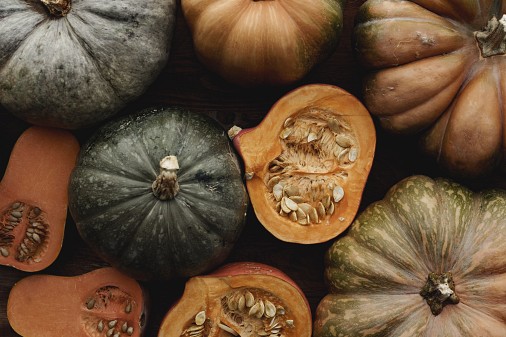Your Fall Garden Checklist
Now that pumpkins are starting to adorn stoops and fun-size candy is filling store shelves, it's the season for you to put your garden to bed for the fall and winter. While you may be producing some fall crops, other aspects of the garden need to be secured so they'll stay safe and cozy in cold weather. First frosts are rapidly descending across the country, along with signs of snow, so it's official: get ready to put away the patio furniture and spend a weekend taking care of the following fall garden checklist.
Condition your soil
You've been working your soil hard all summer to produce crops and flowers. Even if you're growing fall vegetables, it needs some attention. Use a cultivator to loosen the soil and prevent compaction, and then work in compost, mulch if needed to lighten it up, and add fertilizer if necessary. This is also a good moment to dig out between beds and make sure you have stepping stones, planks, or gravel down so you won't slip and slide in the mud this winter.
Divide bulbs and perennials
It's time! Once everything has finished blooming and started dying back, dig up and divide your perennials and bulbs to give them more room to grow. While you're at it, check their roots for signs of disease and (you guessed it!) grab the opportunity to weed and condition the soil. While you're at it, now is the time to plant bulbs.
Mow fall leaves
Raking is fun and all, but mowing is actually better. It shreds and mulches the leaves to condition the soil under the lawn, so if you can, mow and keep mowing until they're too thick. At the same time, add some potassium-rich fertilizer to the lawn to get it ready for winter, and if you haven't already, sow any overwintering grasses like rye.
Get your cool-weather annuals planted
Some flowers, like violas and mums, enjoy the winter! Transplant them now -- and bring in your delicate potted plants. You should also set up frost protection for fragile plants that can't be moved. Add stakes so you can wrap them in frost cloth or other coverings, set up cold frames, and get ready with water jugs to station around your plants so you can stave off frost damage.
Think about pathogens and infestations
It's winter, so nothing can live, right? Well, actually, insects and other pests will keep right on going after fallen fruit, so make sure to clear your harvest well. Plan a crop rotation, too, because if the same plant is grown year after year in the same place, infection with a pathogen is more likely. Keeping a gardening log or journal is helpful for charting information about crop rotations, seeds, and other garden details.
Cut back and trim
Cut back your dead plants so they won't harbor pests, and so they can start growing anew. Trim, clip, and organize other plants, too. Meanwhile, all these clippings will make a great layer in the compost, which can also include fall leaves. (If you prefer, make a separate leaf pile for composting.) Do not put any plants with diseased foliage in the compost! Bag and dispose of them separately.
Garden shed cleanup and maintenance
The summer tends to be a period for gardening exuberance, which equates to a seriously messy shed by fall. Take an hour or two to organize, clean, and sharpen tools, clean the shed, and make sure everything is tidy for spring. This is also a good chance to take a census of any seeds and other supplies to determine what you're going to need in the coming months. Check to see whether you'll need to call a handyman to make repairs on the shed before it starts snowing!
With your garden tucked away, you'll have a few months off except for basic maintenance while your plants get a break too -- and everyone will be happier come spring. If you are too busy this holiday season, call a Portland landscaping service to help you get the garden prepared.
Looking for a Pro? Call us (866) 441-6648

Landscaping Average Costs
Landscapers Experiences

Fast Professional Tree Service For My Crabapple And Persimmon

Landscaping Turns A Weed Patch Into A Great Little Zen Garden




